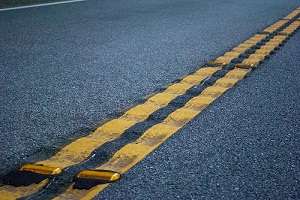Main Roads have conducted trials using red sand as both a subbase and subgrade on a section of Greenlands Road, which connects the Forrest Highway to the South Western Highway at Pinjarra. Credit: Zaheer Mohiuddin
The Sustainable Engineering Group at Curtin University has demonstrated that red sand can be a viable and sustainable material for road construction and top dressing.
Red sand, previously an unusable, unsustainable waste product, is derived by washing and carbonating granular matter leftover as residue from the Bayer alumina refining process, which involves the extraction of alumina from bauxite.
Approximately 30,000 tonnes of fine bauxite residue (red mud) and 18,000 tonnes of a coarse sand fraction (residue sand) are generated daily at Alcoa's three WA alumina refineries.
Curtin University's Dr Wahidul Biswas says red sand's sustainability was assessed using a triple bottom line analysis that included economic, social and environmental objectives.
"Our assessment indicates that using red sand as a substitute for virgin sand and crushed limestone will provide a range of benefits, from monetary savings to conserving land and raw materials for future generations," he says.
"The energy consumption associated with producing red sand is projected to be lower than that required to quarry the two commonly used substances, thereby reducing the overall greenhouse impact."
The study made calculations based on a 35-year projection with a usage of 600,000 tonnes of red sand per year.
Researchers found approximately 66,200 metric tonnes of carbon dioxide equivalent emissions would be avoided.
Land equivalent to 407ha could be conserved with a corresponding avoidance of vegetation loss and preservation of biodiversity.
Financial savings would include reduced costs of approximately A$18 million for the construction industry and potentially millions depending on current outcomes with the federal carbon tax.
Researchers estimate a 12 per cent reduction in virgin sand use for subgrade applications, a 46 per cent reduction in virgin sand used for top dressing and a 12 per cent reduction in the use of limestone for subbase applications.
They also noted intangible benefits such as improved aesthetics, community pride and corporate goodwill for Alcoa, and increased intra-generation equity, based on conserving resources such as forests, energy and materials for future generations.
The WA Department of Main Roads conducted trials using red sand as both a subbase and subgrade on a section of Greenlands Road, which connects the Forrest Highway to the South Western Highway at Pinjarra.
It was shown to have good structural properties for road construction as well as good phosphorous retention for top dressing—which could be used on golf courses, turn farms, parks, playgrounds and sports fields.
Researchers hope red sand will be commercially available in early 2014.
Provided by Science Network WA






















